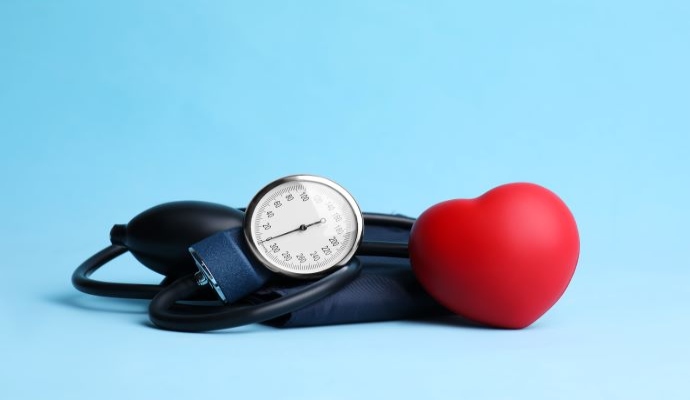RPM Improves Hypertension Outcomes but Drives Up Costs
Though RPM increased medication use and reduced hospital stays among hypertension patients, it spurred a $274 per patient increase in cost, new research shows.

Source: Getty Images
- While remote patient monitoring (RPM) helped improve outcomes for Medicare patients with hypertension, it increased outpatient visits and net healthcare spending, according to a new study.
Published in the Annals of Internal Medicine, the study aimed to assess the impact of RPM use on hypertension care and spending. A grant from the National Institute of Neurological Disorders and Stroke supported the study.
The researchers used traditional Medicare claims for medical services and pharmacy prescription fills to identify patients with a hypertension diagnosis in 2019 who filled at least one prescription for an antihypertensive medication that year. Each patient was attributed to a clinical practice that accounted for most of their 2019 primary care service spending.
The research team categorized the practices based on the share of the patients who received RPM in 2020. Practices where 25 percent or more hypertension patients received RPM were categorized as “high-RPM practices,” while those where less than 2.5 percent of hypertension patients received RPM were defined as “low-RPM practices.”
Researchers compared outcomes data for 192 high-RPM practices with 19,978 hypertension patients to 942 low-RPM control practices with 95,029 hypertension patients.
From 2019 to 2021, hypertension patients at high-RPM practices experienced a 3.3 percent relative increase in hypertension medication fills, a 1.6 percent increase in hypertension medication days’ supply, and a 1.3 percent increase in the number of unique hypertension medications received compared with patients at matched low-RPM practices.
Hypertension patients at high-RPM practices also experienced reductions in the number of hypertension-related emergency department (ED) visits and hospitalizations.
“RPM improved care outcomes for patients with hypertension in the form of increased medication use, more active medication adjustment, and reductions in hypertension-related ED visits and hospitalizations,” said study author Mitchell Tang, a doctoral student at Harvard Business School, in an email to mHealthIntelligence. “Benefits were largest for patients with poor medication adherence and largely in the first few months of RPM.”
However, patients at high-RPM practices experienced relative increases in the number of primary care provider (PCP) office visits and PCP office visit spending.
Further, high-RPM practices’ net hypertension-related spending saw a relative increase of $274 per patient.
“We were surprised to see reductions in hypertension-related ED visits and hospitalizations so quickly into RPM use,” Tang said. “We were also surprised to find that RPM use increased outpatient visit use (rather than substituting for it), suggesting that there was perhaps a ‘more you see, more you do’ phenomenon at play.”
The study notes that RPM readings may have increased patient demand for visits or identified care improvement opportunities, urgent care needs, or new health issues prompting more visits.
Thus, Tang said that appropriate patient targeting for RPM programs and time-limited use could help improve the value of hypertension-focused RPM.
The study adds to research on RPM use in treating hypertension. Research published in JAMA Network Open in 2022 showed that an RPM tool helped treat hypertension among diverse populations, lowering the risk of cardiovascular disease.
Researchers enrolled 10,803 patients in a remote hypertension and cholesterol program between January 2018 and July 2021. Of this population, 3,658 had hypertension, 8,103 had cholesterol issues, and 958 patients had both.
Before enrolling in the program, the mean office blood pressure (BP) was 150/83 mm Hg, and the mean (SD) home BP was 145/83 (20/12) mm Hg. These figures dropped by 8.7/3.8 mm Hg and 9.7/5.2 mm Hg, respectively, among those in the program.
Amid growing clinical evidence, RPM is increasingly used to enhance care for hypertension.
A report released by data analytics company Definitive Healthcare in March revealed that essential hypertension had the highest share of RPM-related claims at 51 percent, followed by diabetes mellitus with complications (10.4 percent).
The report authors analyzed claims volumes across ten Current Procedural Terminology (CPT) codes related to RPM services since 2018. The analysis also showed that RPM-related claims skyrocketed by 1,294 percent from January 2019 through November 2022.
